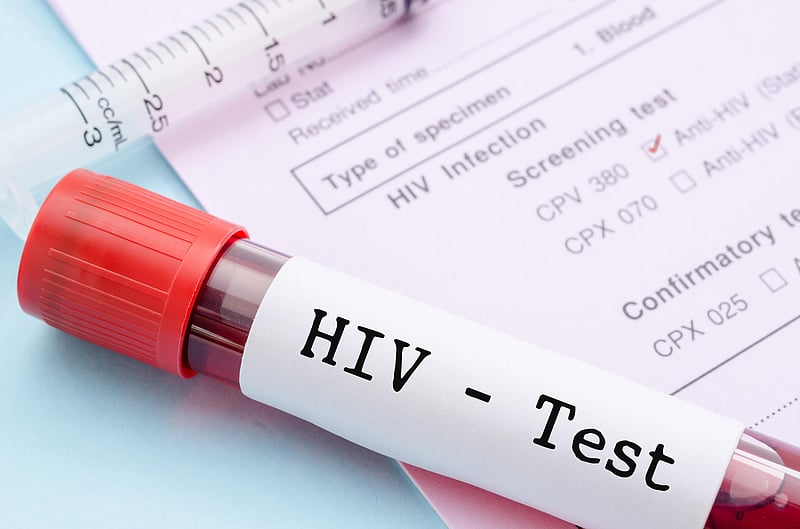Get Healthy!

- Cara Murez
- Posted May 23, 2023
HIV Infections Continue to Decline Among Young Americans
HIV infection numbers in the United States are down, public health officials announced Tuesday.
Declines in young people are driving the overall decrease.
The U.S. Centers for Disease Control and Prevention attributed an overall 12% decline between 2017 and 2021 largely due to a 34% drop in new infections among gay and bisexual males aged 13 to 24.
"Our nation's HIV prevention efforts continue to move in the right direction,"CDC Director Dr. Rochelle Walensky said in an agency news release. "Longstanding factors, such as systemic inequities, social and economic marginalization and residential segregation, however, stand between highly effective HIV treatment and prevention and people who could benefit from them. Efforts must be accelerated and strengthened for progress to reach all groups faster and equitably."
Reasons for the decline are improvements in testing, treatment and preventive medication known as PrEP (pre-exposure prophylaxis). But PrEP is not being distributed equitably, officials said, leading to smaller declines in some groups.
"In prevention, patience is not a virtue,"said Dr. Jonathan Mermin, director of CDC's National Center for HIV, Viral Hepatitis, STD, and TB Prevention. "Decreasing HIV incidence among youth, including young gay and bisexual males, shows us what is possible. But ending the HIV epidemic and achieving equity requires we expand this progress to all."
Young Black and Hispanic gay and bisexual males had lower declines in HIV infection than white men, which the CDC said suggests inequities in prevention and treatment.
About 30% of 1.2 million people who could benefit from PrEP were prescribed it in 2021 compared to 13% in 2017. But, the CDC said, few Black and Hispanic people were among those with prescriptions even though most people who could benefit are in those groups.
In all, about 32,100 new infections were reported in 2021, compared to 36,500 in 2017, according to the CDC. Among 13- to 24-year-olds, new infections dropped from 9,300 to 6,100 during that time period. Roughly 80% of new infections in this age group are among gay and bisexual males.
Most new infections in 2021 were among Black and Hispanic gay and bisexual men. About one-fifth of new infections were among women, more than half among Black women, according to the CDC.
"At least three people in the U.S. get HIV every hour -- at a time when we have more effective prevention and treatment options than ever before," said Dr. Robyn Neblett Fanfair, acting director of CDC's Division of HIV Prevention. "These tools must reach deep into communities and be delivered faster to expand progress from some groups to all groups."
To reach national goals, the CDC said there must be greater use of prevention measures, including those that made less progress between 2017 and 2021, such as people being aware of their HIV status.
About 87% of the estimated 1.2 million people in the United States with HIV in 2021 were aware of their status. Still, about 1 in 8 people with HIV don't know it, the CDC noted.
A greater number of people diagnosed with HIV were virally suppressed due to effective treatment, but viral suppression was lower among Black and Hispanic people than white people, the research team reported.
While more than 468,000 Black people and nearly 313,000 Hispanic people could benefit from PrEP, it was prescribed to fewer than one-quarter of them. More than three-quarters of white people who could benefit got a prescription, the researchers said.
The CDC called for increased investments in proven HIV prevention programs, expanding HIV self-testing, increasing the number and type of settings to reach people with HIV services and always considering equity.
More than half of new HIV infections in 2021 were in the South. It was also the only region with a decline in overall estimated new infections in 2021 when compared to 2017.
The United States also saw significant improvement in eliminating transmission of HIV from woman to newborn. In 2021, there were 0.6 cases of perinatal HIV per 100,000 live births, down from 1.9 per 100,000 in 2010.
By 2030, the Ending the HIV Epidemic in the U.S. initiative aims to reduce new HIV infections by 90% from 2017 levels.
The pace is slower than needed, partly hindered by the COVID-19 pandemic, officials said. President Joe Biden has requested $850 million in funding to support this in his budget proposed for 2024. He proposed $237 million for a national PrEP program.
More information
The U.S. National Library of Medicine has more on HIV.
SOURCE: U.S. Centers for Disease Control and Prevention, news release, May 23, 2023







